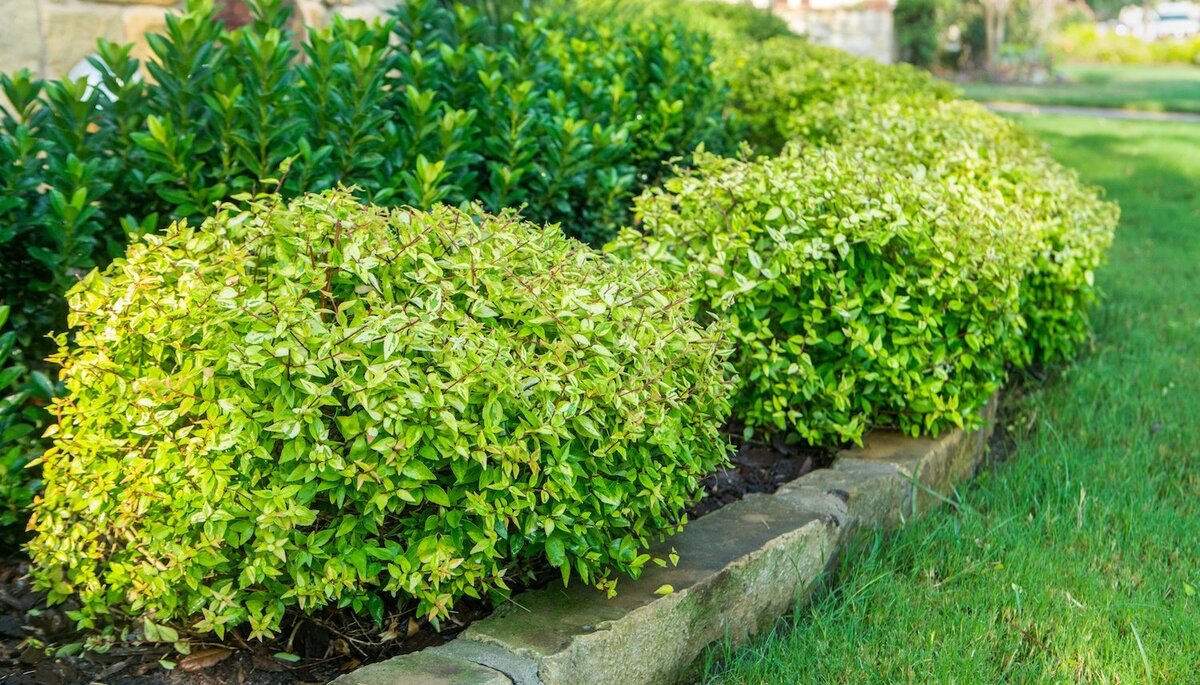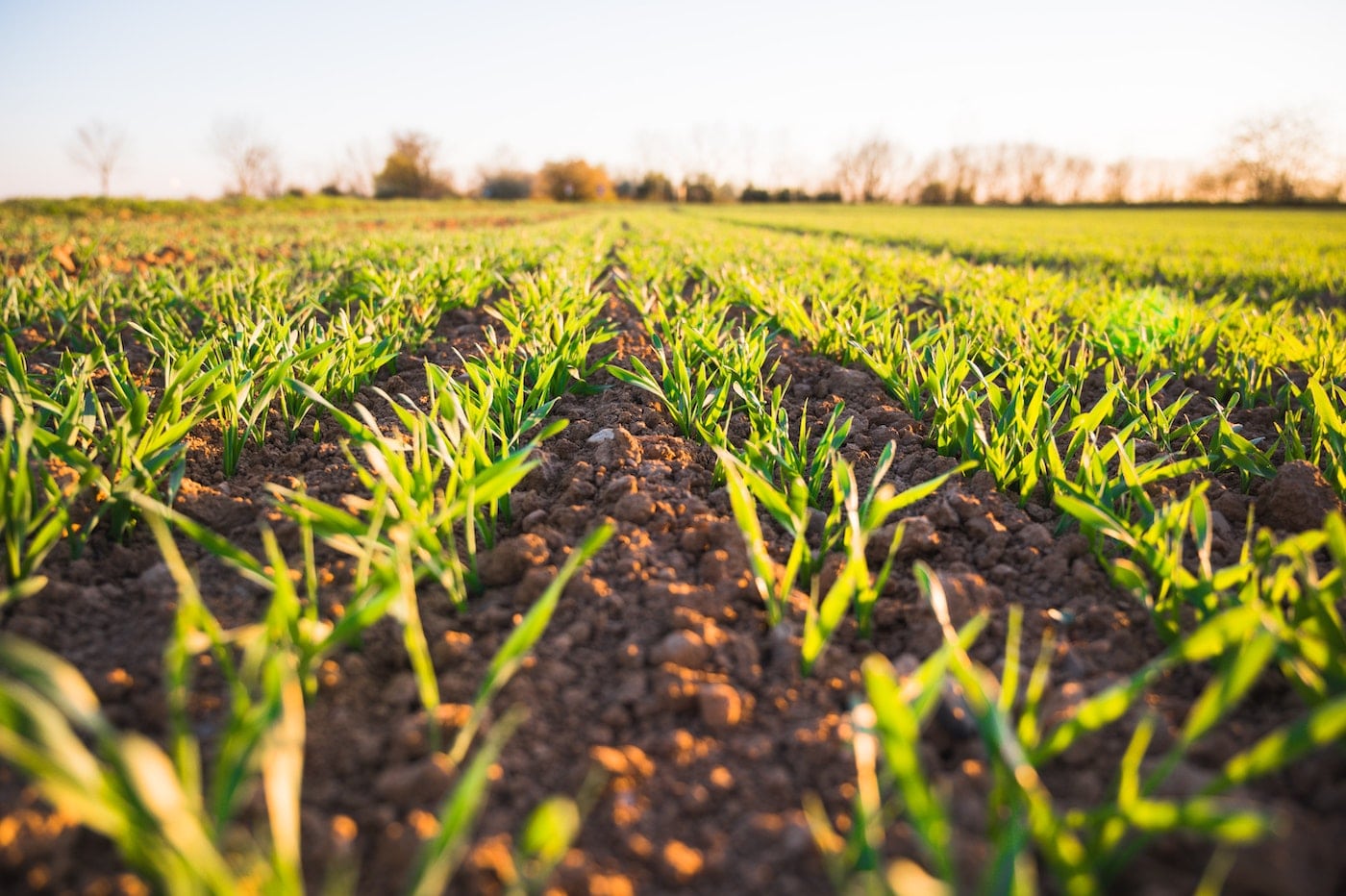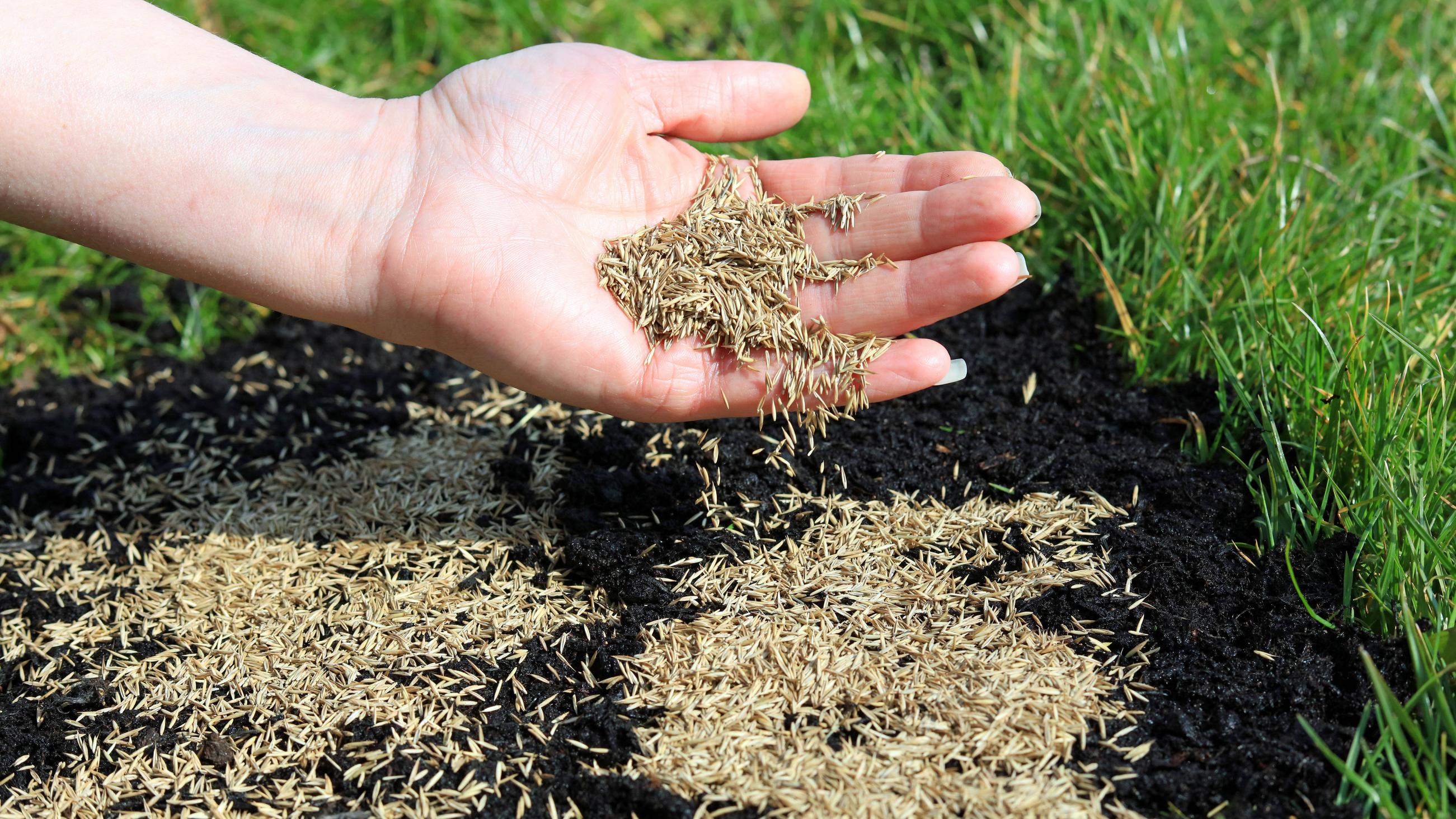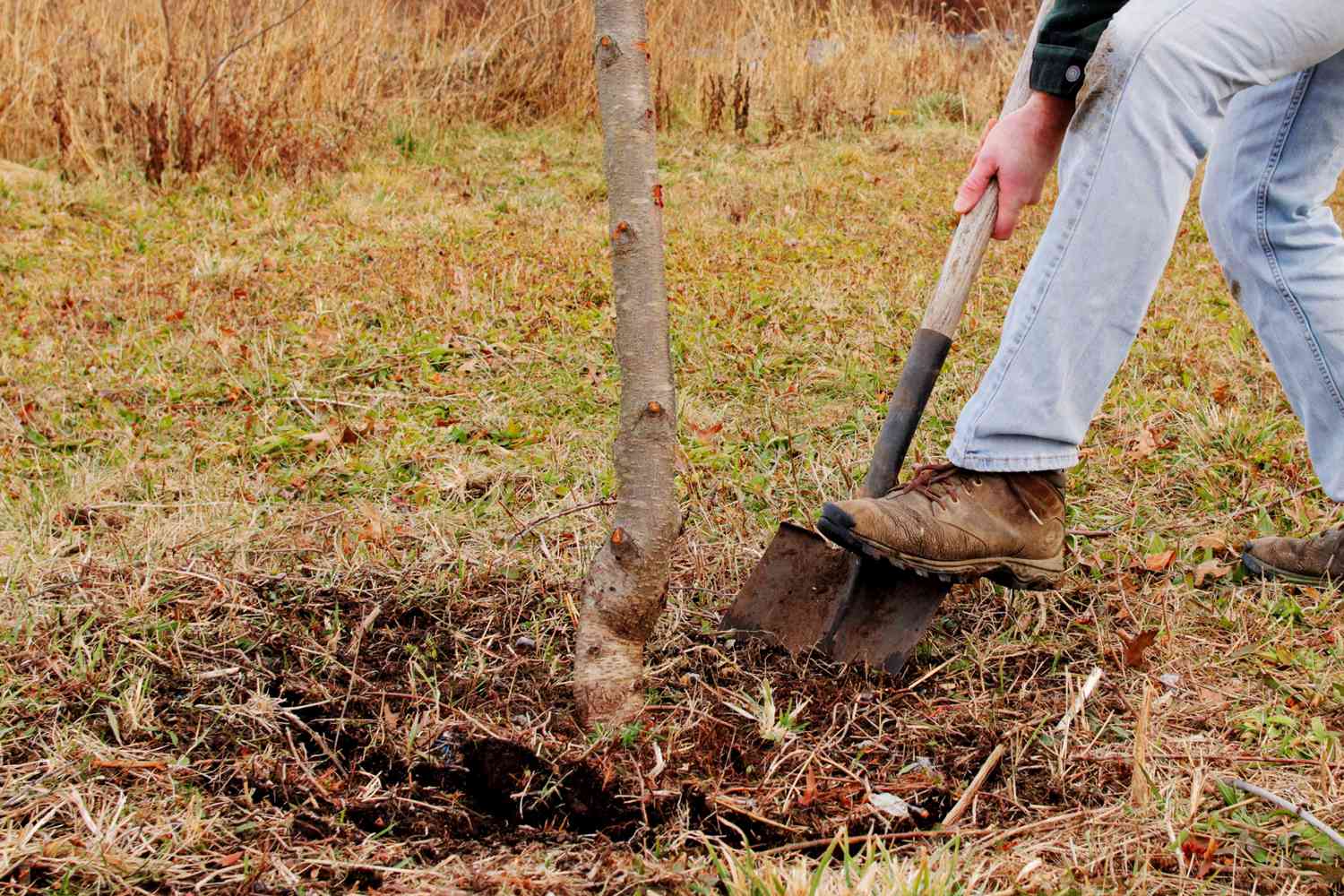Home>Gardening Techniques>Plant Care>How To Apply 10-10-10 Fertilizer When Planting New Small Shrubs


Plant Care
How To Apply 10-10-10 Fertilizer When Planting New Small Shrubs
Modified: January 22, 2024
Learn how to properly care for your new small shrubs by applying 10-10-10 fertilizer. Enhance plant growth and health with our step-by-step guide.
(Many of the links in this article redirect to a specific reviewed product. Your purchase of these products through affiliate links helps to generate commission for Chicagolandgardening.com, at no extra cost. Learn more)
Table of Contents
- Introduction
- What is 10-10-10 Fertilizer?
- Benefits of Using 10-10-10 Fertilizer for New Small Shrubs
- Preparing for Planting New Small Shrubs
- Steps to Apply 10-10-10 Fertilizer When Planting New Small Shrubs
- Important Considerations While Applying 10-10-10 Fertilizer
- Common Mistakes to Avoid When Applying 10-10-10 Fertilizer to New Small Shrubs
- Conclusion
Introduction
Welcome to the world of plant care! Taking care of plants can be a rewarding and fulfilling experience, and one of the essential aspects of plant care is fertilization. Fertilizers provide plants with the essential nutrients they need to thrive and grow. When it comes to planting new small shrubs, using the right fertilizer is crucial to ensure their successful establishment and growth.
One popular type of fertilizer that is often used for new small shrubs is 10-10-10 fertilizer. But what exactly is 10-10-10 fertilizer? In simple terms, it is a balanced fertilizer that contains equal amounts of nitrogen (N), phosphorus (P), and potassium (K). These three nutrients are essential for the overall health and development of plants.
Applying 10-10-10 fertilizer when planting new small shrubs offers several benefits. Firstly, it provides an immediate nutrient boost, helping the shrubs establish their root systems quickly. This is especially important for newly planted shrubs, as a well-developed root system allows them to take up water and nutrients efficiently. Additionally, the balanced formulation of 10-10-10 fertilizer ensures that the shrubs receive all the necessary nutrients in the right proportions, promoting healthy growth and vibrant foliage.
Before applying 10-10-10 fertilizer to your new small shrubs, it is important to properly prepare the planting area. Clear any weeds or grass, and loosen the soil to create a favorable environment for root growth. Once the area is prepared, you can proceed with applying the 10-10-10 fertilizer using a specific method to ensure maximum effectiveness.
In this article, we will guide you through the steps to apply 10-10-10 fertilizer when planting new small shrubs. We will also discuss important considerations to keep in mind and common mistakes to avoid. So, let’s dive in and learn how to give your new small shrubs the best start possible!
What is 10-10-10 Fertilizer?
10-10-10 fertilizer is a type of balanced fertilizer that is commonly used in gardening and plant care. The numbers 10-10-10 refer to the nutrient ratio of nitrogen (N), phosphorus (P), and potassium (K) present in the fertilizer. Each number represents the percentage of the nutrient content, in the order of N-P-K.
The first number, 10, represents the percentage of nitrogen. Nitrogen is an essential nutrient for plant growth and is responsible for promoting leaf and stem development. It plays a crucial role in the production of chlorophyll, which is essential for photosynthesis. Adequate nitrogen levels in the soil ensure that plants have the energy they need to grow and produce vibrant foliage.
The second number, also 10, represents the percentage of phosphorus. Phosphorus is vital for root development, flowering, and fruit production. It aids in the transfer of energy within the plant and is essential for processes such as cell division and growth. Proper phosphorus levels in the soil contribute to overall plant health and promote strong root systems.
The third number, once again 10, represents the percentage of potassium. Potassium plays a crucial role in several plant functions, including regulating water uptake and retention, enhancing disease resistance, and promoting fruit development. It helps to improve overall plant vigor and resilience to stressful conditions such as drought or disease.
By using a balanced fertilizer like 10-10-10, gardeners can ensure that plants receive a consistent supply of essential nutrients. The equal ratio of nitrogen, phosphorus, and potassium in this fertilizer promotes balanced growth, supports root development, and encourages lush foliage and blooms.
It is important to note that while 10-10-10 fertilizer is suitable for many types of plants, it may not be suitable for all. Different plants have varying nutrient requirements, so it is essential to consider the specific needs of your plants before applying any fertilizer. Conducting a soil test can help you determine the nutrient levels and pH of your soil, allowing you to make informed decisions about the type and amount of fertilizer to use.
Now that we understand what 10-10-10 fertilizer is and the nutrient ratios it provides, let’s explore the benefits of using this fertilizer for new small shrubs.
Benefits of Using 10-10-10 Fertilizer for New Small Shrubs
When it comes to planting new small shrubs, using 10-10-10 fertilizer can offer several advantages. Let’s explore the benefits of using this fertilizer for your young shrubs:
- Promotes Healthy Root Development: The balanced nutrient composition of 10-10-10 fertilizer provides optimal conditions for root growth. The phosphorus content aids in the development of strong and robust root systems, ensuring that the shrubs can efficiently absorb moisture and nutrients from the soil.
- Supports Early Establishment: Applying 10-10-10 fertilizer at the time of planting gives new small shrubs an immediate nutrient boost, helping them establish faster. This is especially beneficial for young shrubs as they need a strong foundation to thrive and withstand environmental stressors.
- Enhances Growth and Foliage: The nitrogen component of the 10-10-10 fertilizer promotes lush foliage and vigorous growth. It stimulates the production of chlorophyll necessary for photosynthesis, ensuring that the shrubs can manufacture their food and grow well.
- Provides Balanced Nutrition: With equal amounts of nitrogen, phosphorus, and potassium, 10-10-10 fertilizer offers a balanced blend of nutrients. This ensures that the shrubs receive all the essential elements in the right proportion, preventing nutrient deficiencies that can hinder growth and development.
- Improves Disease Resistance: The potassium content in 10-10-10 fertilizer helps strengthen the shrubs’ immune system, making them more resistant to diseases and pests. It improves the overall plant’s resilience, enabling it to better withstand environmental stresses.
- Convenient and Easy to Use: 10-10-10 fertilizer is readily available in garden centers and can be easily applied. It comes in various forms, including granular and liquid, making it convenient for gardeners to choose the preferred method of application.
However, while the benefits of using 10-10-10 fertilizer are significant, it is crucial to consider the specific requirements of your small shrubs and adjust the fertilizer application accordingly. Each plant species may have unique needs, so be sure to research and understand the specific nutrient requirements of your shrubs.
With the knowledge of the benefits of using 10-10-10 fertilizer for new small shrubs, let’s now explore the necessary steps to ensure proper application when planting.
Preparing for Planting New Small Shrubs
Before planting new small shrubs, it’s essential to prepare the planting area properly. Taking the time to prepare the soil and create an ideal environment for the shrubs will significantly contribute to their overall health and successful establishment. Here are some steps to follow when preparing for planting:
- Select the Right Location: Choose a suitable location for your small shrubs that meets their specific light requirements. Consider factors such as sun exposure, shade, and soil conditions. Different shrubs thrive in different environments, so it’s crucial to choose a location that suits their needs.
- Clear the Planting Area: Remove any existing vegetation or weeds from the planting area. These can compete with the shrubs for nutrients and water, hindering their growth. Use a garden spade or a weed trimmer to clear the area effectively.
- Loosen the Soil: Use a garden fork or a tiller to loosen the soil in the planting area. This will promote better root penetration and drainage, allowing the shrubs to establish their root systems more easily. Loosening the soil also helps break up compacted areas, ensuring that the roots can access nutrients and water.
- Add Organic Matter: Incorporate organic matter, such as compost or well-rotted manure, into the soil. This will improve its structure and provide additional nutrients for the shrubs. Organic matter enhances moisture retention and drainage, creating a favorable growing environment.
- Test the Soil: Consider conducting a soil test to determine its pH level and nutrient content. This will help you identify any deficiencies or imbalances in the soil and allow you to amend it accordingly. Adjusting the soil pH and nutrient levels will help create an optimal environment for the shrubs to thrive.
By following these steps, you will ensure that your planting area is well-prepared and ready for the new small shrubs. The next step would be to properly apply the 10-10-10 fertilizer to provide the necessary nutrients for the shrubs’ growth. Let’s explore the steps to apply the fertilizer when planting your small shrubs.
Steps to Apply 10-10-10 Fertilizer When Planting New Small Shrubs
Applying 10-10-10 fertilizer correctly when planting new small shrubs is crucial to ensure they receive the necessary nutrients for healthy growth. Let’s explore the steps to follow:
- Dig the Planting Hole: Dig a hole that is slightly wider and deeper than the shrub’s root ball. The hole should be large enough to accommodate the roots without crowding them. Place the excavated soil in separate container or tarp for later use.
- Measure and Calculate the Fertilizer Amount: Refer to the instructions on the package of the 10-10-10 fertilizer to determine the appropriate amount for your shrubs. The quantity will depend on the size and specific requirements of the shrubs.
- Incorporate the Fertilizer: Mix the calculated amount of 10-10-10 fertilizer with the soil that was set aside. Thoroughly blend the fertilizer and soil using a garden fork or shovel. Ensure that the fertilizer is evenly distributed throughout the soil mixture.
- Place the Shrubs in the Hole: Carefully position the small shrubs in the hole, making sure they are at the same depth or slightly higher than their original container. Gently spread out the roots within the hole, avoiding any excessive bending or crowding.
- Backfill the Hole: Gradually backfill the hole with the soil-fertilizer mixture, ensuring that the shrub remains upright and stable. Gently press the soil around the roots to eliminate any air pockets. Avoid compacting the soil too tightly, as this can restrict root growth.
- Water Thoroughly: After planting, water the shrubs thoroughly to settle the soil and help eliminate any remaining air pockets. Provide enough water to thoroughly soak the soil around the roots. This will encourage the shrubs to establish their root systems and aid in nutrient uptake.
- Mulch the Base: Apply a layer of organic mulch, such as wood chips or straw, around the base of the shrubs. This will help conserve moisture, suppress weed growth, and provide additional nutrients as it breaks down over time.
It’s important to note that while 10-10-10 fertilizer provides essential nutrients, it is not a substitute for proper watering and overall plant care. Regular watering, appropriate pruning, and monitoring for any signs of pests or diseases are also essential for the health of your new small shrubs.
Now that you know the steps to apply 10-10-10 fertilizer when planting new small shrubs, let’s explore some important considerations to keep in mind while applying the fertilizer.
Important Considerations While Applying 10-10-10 Fertilizer
While using 10-10-10 fertilizer can provide numerous benefits for new small shrubs, it is crucial to consider certain factors to ensure its effective application and avoid any potential issues. Here are some important considerations to keep in mind:
- Read and Follow Instructions: Before applying any fertilizer, carefully read and follow the instructions provided on the packaging. These instructions will guide you on the recommended application rates, frequency, and any specific precautions or guidelines.
- Avoid Over-Fertilization: Applying excessive amounts of fertilizer can do more harm than good. Over-fertilization can lead to nutrient imbalances, root burn, and environmental pollution. Always measure the fertilizer accurately and apply it according to the recommended rates.
- Timing of Application: Determine the appropriate time to apply the 10-10-10 fertilizer based on the specific needs of your shrubs. Generally, it is best to apply the fertilizer during the active growing season, typically in spring or early summer. However, refer to the instructions or consult a gardening expert for precise timing recommendations.
- Avoid Fertilizer Contact with Stems and Foliage: When applying the fertilizer, make sure to keep it away from direct contact with the shrubs’ stems, leaves, and foliage. Fertilizer coming into contact with plant tissues can cause damage and potentially burn the delicate plant parts.
- Watering after Application: After applying the 10-10-10 fertilizer, it is important to water the shrubs thoroughly. This will help activate the fertilizer and ensure that the nutrients are available to the plant roots. Proper watering will also help prevent fertilizer burn and aid in the distribution of nutrients within the soil.
- Consider Soil Moisture Levels: Take into account the soil moisture levels before applying the fertilizer. It is generally recommended to apply fertilizer to moist soil to prevent the risk of fertilizer burn. If the soil is dry, consider watering the area lightly before applying the fertilizer.
- Monitor Shrub’s Response: Keep a close eye on the shrubs’ response to the fertilizer application. Observe the foliage, growth patterns, and overall health of the plants. If you notice any signs of nutrient deficiency or excess, such as yellowing leaves or stunted growth, adjust the fertilizer application accordingly.
- Consider Environmental Factors: Take into consideration the environmental factors that can affect fertilizer effectiveness, such as temperature, rainfall, and soil conditions. Adjust the application frequency and rates based on these factors to avoid wastage and ensure optimal nutrient uptake.
By considering these important factors, you can ensure efficient and successful application of 10-10-10 fertilizer while planting new small shrubs. Being mindful of these considerations will contribute to the overall health and growth of your shrubs.
Now that we have discussed the important considerations, let’s explore some common mistakes to avoid when applying 10-10-10 fertilizer to new small shrubs.
Common Mistakes to Avoid When Applying 10-10-10 Fertilizer to New Small Shrubs
While applying 10-10-10 fertilizer to new small shrubs can be beneficial, it’s essential to be aware of common mistakes that can hinder their growth and health. Avoiding these mistakes will help ensure optimal fertilizer application and promote the success of your shrubs. Here are some common mistakes to avoid:
- Over-fertilization: Applying too much fertilizer can result in nutrient imbalances and burn the roots of the shrubs. Avoid applying excessive amounts of 10-10-10 fertilizer and follow the recommended application rates specified on the packaging.
- Under-fertilization: On the other hand, providing insufficient nutrients can limit the shrubs’ growth and development. Make sure to apply the appropriate amount of 10-10-10 fertilizer based on the specific requirements of your small shrubs.
- Not considering soil conditions: Failing to consider the existing soil conditions can impact the effectiveness of the fertilizer application. Conduct a soil test to determine the soil’s pH level and nutrient content, and adjust the fertilizer application accordingly.
- Fertilizer contact with stems and foliage: Direct contact between the fertilizer and the shrub’s stems, leaves, or foliage can cause damage or burn the plant tissues. Always ensure that the fertilizer is applied away from the plant parts to prevent accidental harm.
- Inappropriate application timing: Applying the 10-10-10 fertilizer at the wrong time can negate its benefits. Consider the specific needs of your shrubs and apply the fertilizer during the active growing season when they can best utilize the nutrients.
- Not watering after application: Failing to water the shrubs after applying the fertilizer can limit nutrient uptake. Watering the plants thoroughly after application helps activate the fertilizer and ensures that the nutrients are available to the roots.
- Ignoring proper storage: Proper storage of the 10-10-10 fertilizer is essential to maintain its effectiveness. Store it in a cool, dry place, away from direct sunlight and moisture, to prevent clumping or degradation of the product.
- Not adjusting for environmental factors: Environmental factors such as temperature, rainfall, and soil conditions can influence fertilizer effectiveness. Adjust the application frequency and rates based on these factors to ensure optimal nutrient absorption by the shrubs.
- Using expired fertilizer: Using expired fertilizer can provide ineffective or imbalanced nutrients to your shrubs. Check the expiration date on the packaging and avoid using outdated products.
By avoiding these common mistakes, you can ensure that your new small shrubs receive the right amounts of nutrients from the 10-10-10 fertilizer, leading to healthy growth and vibrant foliage. Now that we have covered the common mistakes to avoid, let’s conclude our discussion on the essential aspects of applying 10-10-10 fertilizer to new small shrubs.
Conclusion
Properly applying 10-10-10 fertilizer when planting new small shrubs is an important step in providing them with the necessary nutrients for healthy growth and establishment. This balanced fertilizer, with its equal amounts of nitrogen, phosphorus, and potassium, promotes root development, enhances growth and foliage, and improves overall plant health. By following the proper steps and considering important factors such as soil preparation, correct timing, and avoiding common mistakes, you can ensure the effective application of the 10-10-10 fertilizer.
Remember to read and follow the instructions on the fertilizer packaging, measure the fertilizer accurately, and mix it thoroughly with the soil. Take into account the specific needs of your shrubs and adjust the application rates accordingly. Monitor the response of the shrubs to the fertilizer and make adjustments as needed. Additionally, consider important factors such as soil moisture levels, environmental conditions, and storage of the fertilizer to maximize its effectiveness.
Applying 10-10-10 fertilizer when planting new small shrubs can help them establish strong root systems, promote healthy growth, and enhance their overall resilience. However, it’s important to note that fertilizer is just one component of successful plant care. Providing proper watering, regular maintenance, and monitoring for pests and diseases are equally important for the health and well-being of your small shrubs.
Now armed with the knowledge of how to apply 10-10-10 fertilizer to new small shrubs, you can confidently embark on your plant care journey and watch your shrubs thrive. Remember to always consider the specific needs of your plants and adjust your fertilizer and care practices accordingly. Happy gardening!









